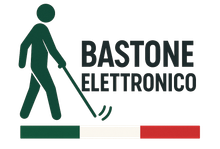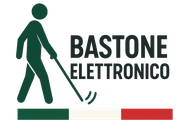UltraCane
The only Electronic Cane for the Blind with dual ultrasonic sensor.
Electronic cane for the blind
The innovative white walking cane for the blind
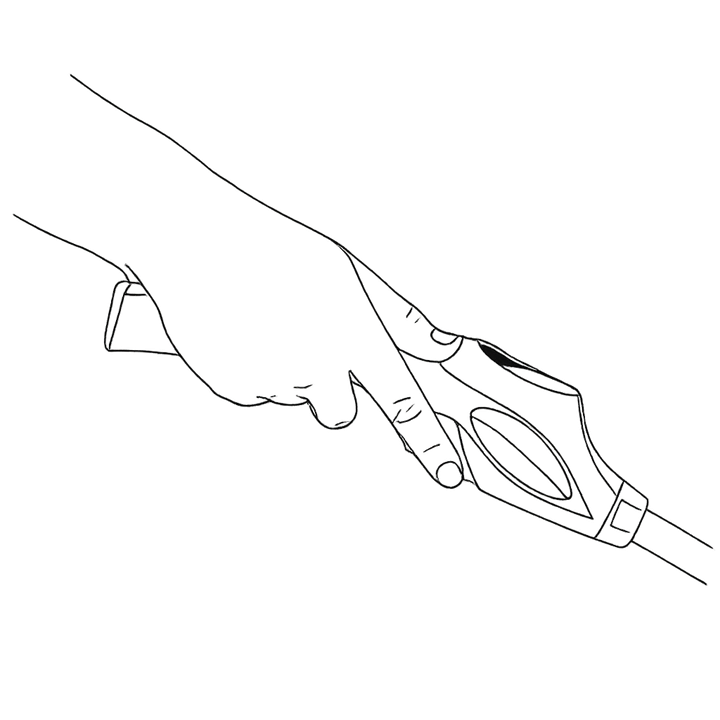
What is UltraCane
UltraCane is the most advanced solution to mobility issues for blind individuals.
Composed of a conventional foldable white cane, UltraCane is equipped with a truly revolutionary device: the handle of the cane is actually a special grip capable of emitting a beam of ultrasound that can detect objects and obstacles in the surrounding environment.
This 'radar' system, similar to the behaviour of bats, is housed in the handle, which features on the upper surface of its grip two yellow feedback buttons and two ultrasound sensors directed forward and upward.
Dual ultrasonic radar system
The new UltraCane Electronic Cane consists of a conventional foldable white cane attached to a special handle containing an ‘ultrasonic radar’ system to detect objects and obstacles in the environment, similar to the system used by bats.a
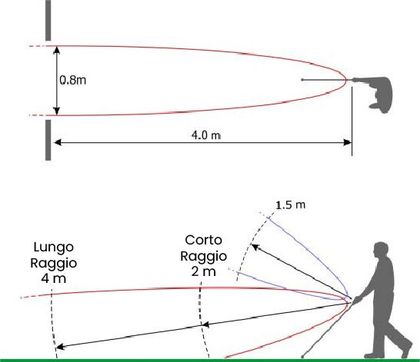
Detects obstacles above the belt
The dual radar sensors of the UltraCane Electronic Cane will allow you to detect not only obstacles at your feet but also above waist level, thus avoiding collisions with objects at shoulder and head height.
The height detection of the sensor is fixed at approximately 1.6 metres.
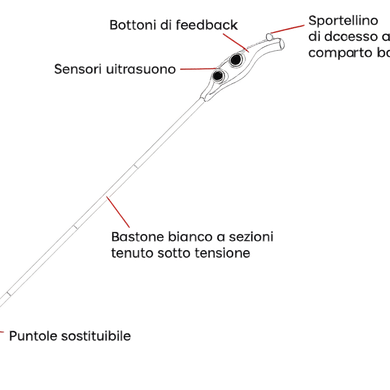
Replaceable punctual
The UltraCane Electronic Cane comes with two types of tips: large spherical and cylindrical.
It is also possible to request, as an optional accessory, the cushioned half-sphere and the small sphere, which can be swapped out depending on use.
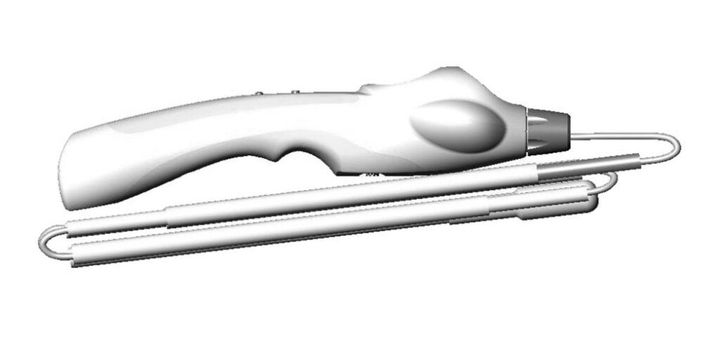
Occupies little space
The UltraCane Electronic Cane is equipped with a practical neoprene pouch in which to store it when not in use.
The pouch, made from technical fabric, is waterproof with a nylon lining to protect UltraCane from water, dust, and impacts.
It is very important to store the device in its
designated case to prevent accidental drops or other damage.

Easy to learn
Learning to use the UltraCane Electronic Cane is quick and easy.
Thanks to the
User Guide
and practical
Training Exercises, you can become familiar with the device's controls and be independent in your movements.
The advantages of the stick
Download guides
The UltraCane Electronic Cane for the blind and visually impaired will be a valuable and helpful aid to your mobility.
You will be able to use the UltraCane Electronic Cane for many years, making the most of its
dual radar sensors, moving around with confidence and independence.
To assist you in using it and to get to know all the features of this new walking cane, we have created
two audio files that will allow you to learn more about the new radar technology in the
UltraCane Electronic Cane.
Our Partners
BEL Electronic Cane Lions.
“Technology in support of visual disabilities.”
The Lions Club Verona Cangrande launched this project in
2010, when a French instructor led the first course in Italy, teaching two blind individuals (one in Verona and one in Trento) how to use the
BEL electronic cane and simultaneously training two Italian mobility instructors.
In 2011, dissemination began in Northern Italy, eventually expanding to demonstrations across the entire national territory. Numerous requests from the UIC and Lions Clubs made it possible to carry out nearly 100 donations during the Foundation’s centenary year. And thanks to the support of the Leo Club, over 150 aids were delivered despite the two years of the pandemic.

Where there's a need, there's a Leo.
“Leadership, Experience, Opportunity.” This is what a Leo represents. Members of Leo clubs embody the finest qualities of our incredible organisation. They are devoted young people who put the power of action into practice. Together, Leos and Lions form a powerful and mutually respectful partnership where Lions learn from Leos' innovative perspectives, and Leos gain access to the proven strategies used by those who have successfully served the world for decades.

FAQ
Must I use the UltraCane like a "traditional" white cane?
The "traditional" white cane is used by moving it from side to side, in a sweeping and tapping motion over the area where the next step will fall.
The innovative electronic UltraCane has been designed as a primary mobility aid for people with visual impairments, as in addition to having the structure of a classic white cane, it detects obstacles thanks to the dual ultrasonic sensors built into the handle, alerting the user to the presence of obstacles in their path and at shoulder/head height.
When using the UltraCane, it is important to apply traditional white cane techniques such as tapping, arcing, and brushing, especially for locating kerbs and steps. These techniques and other instructions are described in more detail in the training exercises guide, which should be read alongside this user guide.
Should I use the short-range or long-range setting?
When starting to use the UltraCane, it is advisable to try both range settings.
If you find that the front button provides vibration too frequently, giving you ‘excessive’ feedback, it may be necessary to keep the short-range setting. This largely depends on the environment and how cluttered it is with objects and obstacles.
The long-range function is not recommended for indoor use but is more useful when outdoors in less crowded areas.
In general, choosing to use a particular range (short or long) is a matter of personal preference and level of experience with the UltraCane electronic cane.
Reminder: The detection ‘zone’ of the upper sensor is not affected by the short/long-range setting and always remains fixed at approximately 1.6 metres (5 feet).
How sensitive is the UltraCane?
The UltraCane electronic cane can detect both a lamp post up to 4 metres away and street sign poles positioned along the pavement. It also detects smaller objects, especially if they have flat surfaces and are directly in front of you, as well as thin bars and low posts, along with bushes, plants, and curtains.
Obstacles such as bags on the ground 3–4 metres away will be detected in long-range mode, but probably not in short-range mode, as they may be out of reach of the ultrasonic sensor.
Is there anything the UltraCane electronic cane will not detect?
It is not possible for the UltraCane electronic cane to detect level changes at ground level, such as stairs, kerbs, and holes; therefore, it is important to maintain traditional white cane skills when using the UltraCane to identify these types of obstacles.
The UltraCane may not detect soft fabrics or small obstacles at the edge of the selected range. Generally, it works better with hard surfaces, as these produce a stronger ultrasonic echo.
The UltraCane does not detect objects within 30 cm (12 inches) of the sensors.
The UltraCane has a small ‘silent zone’ near the tip of the cane where it cannot detect low-height objects (such as raised kerbs at the side of the road). The size of the silent zone depends on the length and angle of the cane and the height of the object. In general, low-height objects will be detected more effectively with the long-range setting.
Is there a place where the UltraCane has difficulty detecting objects?
Some surfaces, such as tall grass, bushes, and rocky terrain, can cause unwanted sound echoes that may occasionally make the UltraCane vibrate, even when there are no obstacles or objects present. Please exercise great caution when exploring these types of terrain.
Some types of car reversing sensors use the same kind of ultrasonic signals as the UltraCane electronic cane and may cause it to vibrate inappropriately. Be very careful around cars reversing.
Two or more UltraCane devices used simultaneously in close proximity can interfere with each other. This may cause both electronic canes to vibrate inappropriately from time to time.
Do I need training to use the UltraCane electronic cane?
If you already use a white cane, you should adapt easily to using the UltraCane. The feedback you receive through your thumb accesses a part of the brain that creates mental maps, so once your brain is accustomed to the signals, you will be able to move with less effort than before.
To assist you further, we have developed some UltraCane training techniques, which you will receive along with this user guide. There are also many professionals who have participated in UltraCane mobility and rehabilitation training.
Please contact your local mobility officer for further guidance.
What should I do if the UltraCane stops working?
The UltraCane is modelled on the traditional white cane and so, in the unlikely event that the electronics fail while you are out, it will still be usable as a traditional white cane to reach your destination.
The UltraCane doesn’t seem to be working. What should I do?
Check that the batteries have been installed correctly. Try replacing the batteries with new ones.
How can I check that my UltraCane is working correctly?
- Listen for the two-tone beep sequence.
- Listen for the clicking sound from the sensors.
- Wave your hand in front of each sensor at a distance of about 1 metre and check for vibration.
Can I use my UltraCane in the rain?
The UltraCane electronic cane has been designed to withstand light rain. If you are caught in heavy rain, you must immediately switch off the cane and take it to shelter.
If your cane gets wet, allow it to dry naturally in the open air at room temperature.
To prevent permanent damage, avoid prolonged or repeated exposure to water or rain, as the UltraCane electronic cane may become damaged and stop functioning properly.


